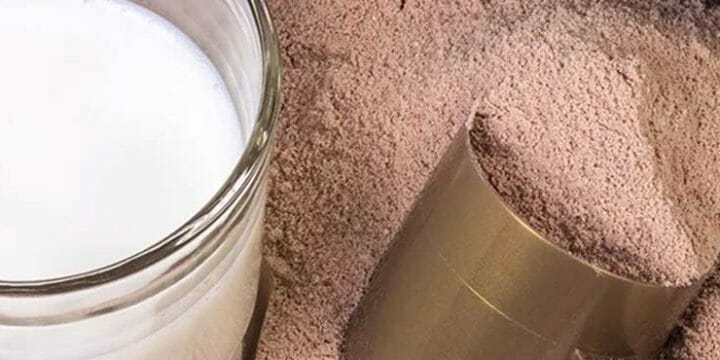As a fitness trainer, many clients ask me for help because they want to lose belly fat.
Yes, those stubborn love handles around your waist circumference won’t always go away, even with a healthy and stringent weight loss diet.
And the most frustrating thing for many people is that losing fat around the belly is a very slow process.
But how long does it take, and are there ways to speed things up?
Let’s take a look at how we approach visceral fat with clients.
Quick Summary
- To lose belly fat effectively, it's crucial to adopt a calorie-deficit diet and a varied exercise routine, starting with noticeable results within days.
- A holistic approach to weight loss, including diet changes, exercise variety, and lifestyle adjustments, is essential for targeting visceral fat.
- Reducing daily calorie intake by 500 calories can lead to burning approximately 55 grams of fat per day, according to the Cleveland Clinic.
- In my opinion, consistency in both diet and exercise, rather than quick fixes, is key to sustainable belly fat loss.
How Quickly Can You Burn Fat?

In my experience, clients can begin losing belly fat within days by adopting a calorie-deficit diet and regular exercise.
By reducing your daily intake by 500 calories, your body compensates by burning stored fat.
While this approach is effective, it's important to ensure you're still consuming enough calories for overall health.
You don't need to be a scientist to figure out weight loss. Fat has nine calories per gram, so you might lose around 55 grams or 1.5 ounces daily, says the Cleveland Clinic [1].
Losing fat takes time, especially around the belly, but it's worth it for a healthier BMI.
For a deep dive, a DXA scan from UC Davis Health [2] can show your body's fat details. It helps set real goals and tracks fat loss, not just water weight.
Don't fall for the myth that you can lose belly fat by exercise alone. It's all about a mix of weight loss methods, like core exercises and watching your calories. This combo shrinks belly fat and tones you up.
Next, we'll explore sustainable strategies for losing visceral fat.
How Can You Speed Up Losing Belly Fat?
From my personal training experience, here are the three things we go through with clients to help them lose weight and target visceral fat.
In addition to diet and exercise, environmental and lifestyle factors such as exposure to pollutants, quality of sleep, and daily activity levels can significantly influence our body's ability to lose fat, highlighting the importance of a holistic approach to weight loss.
1. Diet

As I often tell my clients, no amount of exercise can compensate for a poor diet. I've seen the best results when they focus on a balanced diet with a calorie deficit.
It's not just about working out more; it's about eating smarter.
A balanced diet with a calorie deficit, especially one that cuts out refined carbs, is essential for real weight loss.
That means no more white bread, pasta, and those highly processed breakfast cereals that have about as much nutritious value as the boxes they come in.
The good news is that you can approach this with an app like Noom that will tell you many factors of what’s in the food you’re eating. This app also makes some suggestions for what things you should be cutting out.
This alone will have a significant impact on your waist measurement in a matter of weeks.
“What you eat matters more than how you work it off, but fitness will push you past plateaus and help you achieve your ultimate goals.”
- Alexandria Gomez, Writer at WomensHealthMag.com
2. Exercise

Through my training sessions, I've noticed that a common error in weight loss routines is repetition; doing the same exercise, like daily walking or running, leads to a plateau as your body adapts.
To avoid this, mix up your workouts with varied activities such as running, high-intensity interval training, plyometrics, and rowing.
This variety challenges your body and helps prevent stagnation in fat loss.
Vary your workout schedule each week to keep your weight loss program dynamic.
Changing the intensity and type of exercise regularly boosts your metabolism's effectiveness in targeting fat cells, potentially leading to a loss of a pound or more of fat monthly.
Plus, the satisfaction of fitting into your clothes differently is an added bonus.
3. Supplements

Once you’ve fixed your diet and workouts, you can add a fat-burning supplement to help speed the weight loss up a bit. In my practice, after clients have established a solid diet and exercise routine, I sometimes recommend fat-burning supplements to further aid their weight loss journey.
These supplements can be very effective in helping you lose weight, even in situations where nothing seems to work.
You can also add a pre-workout supplement to help you train just a bit harder before fatigue sets in.
These are not just good for building lean muscle mass but for visceral fat loss as well and can improve both men’s and women’s health.
Why Is Belly Fat Particularly Bad For Your Health?

Dealing with many clients, I've seen how belly fat, or visceral fat, poses significant health risks beyond just appearance concerns. Located near vital organs, it can lead to serious health issues.
Excess visceral fat releases cholesterol into the bloodstream, increasing the risk of heart disease and high blood pressure. This can create a cycle where more visceral fat is stored.
Additionally, it can cause insulin resistance, affecting blood sugar levels and increasing the risk of diabetes, which complicates weight loss efforts. Therefore, targeting belly fat is a crucial aspect of any exercise program.
While discussing the physical journey of fat loss, it's crucial to acknowledge the psychological journey as well, including the importance of maintaining motivation, understanding the mental health impacts of dieting, and recognizing the psychological effects of exercise on our overall well-being.
Related Article: What's the Best Way to Lose Belly Fat?
FAQs
How Long Does It Take For Your Body to Start Burning Fat?
It takes about 45 minutes of aerobic exercise for your body to start to burn fat. At that stage, blood glucose and glycogen reserves will run low, and the only way your body can continue to fuel itself is by resorting to stored subcutaneous fat, including visceral fat.
What Type Of Exercise Burns the Most Fat?
High-intensity circuit training is the exercise that tends to burn the most fat. It uses up all the easily available energy reserves quickly so that your metabolism is forced into boosting energy levels with fat.
References:
- https://health.clevelandclinic.org/how-many-calories-a-day-should-i-eat/
- https://health.ucdavis.edu/sports-medicine/resources/dxa-info
About The Author
You May Also Like






